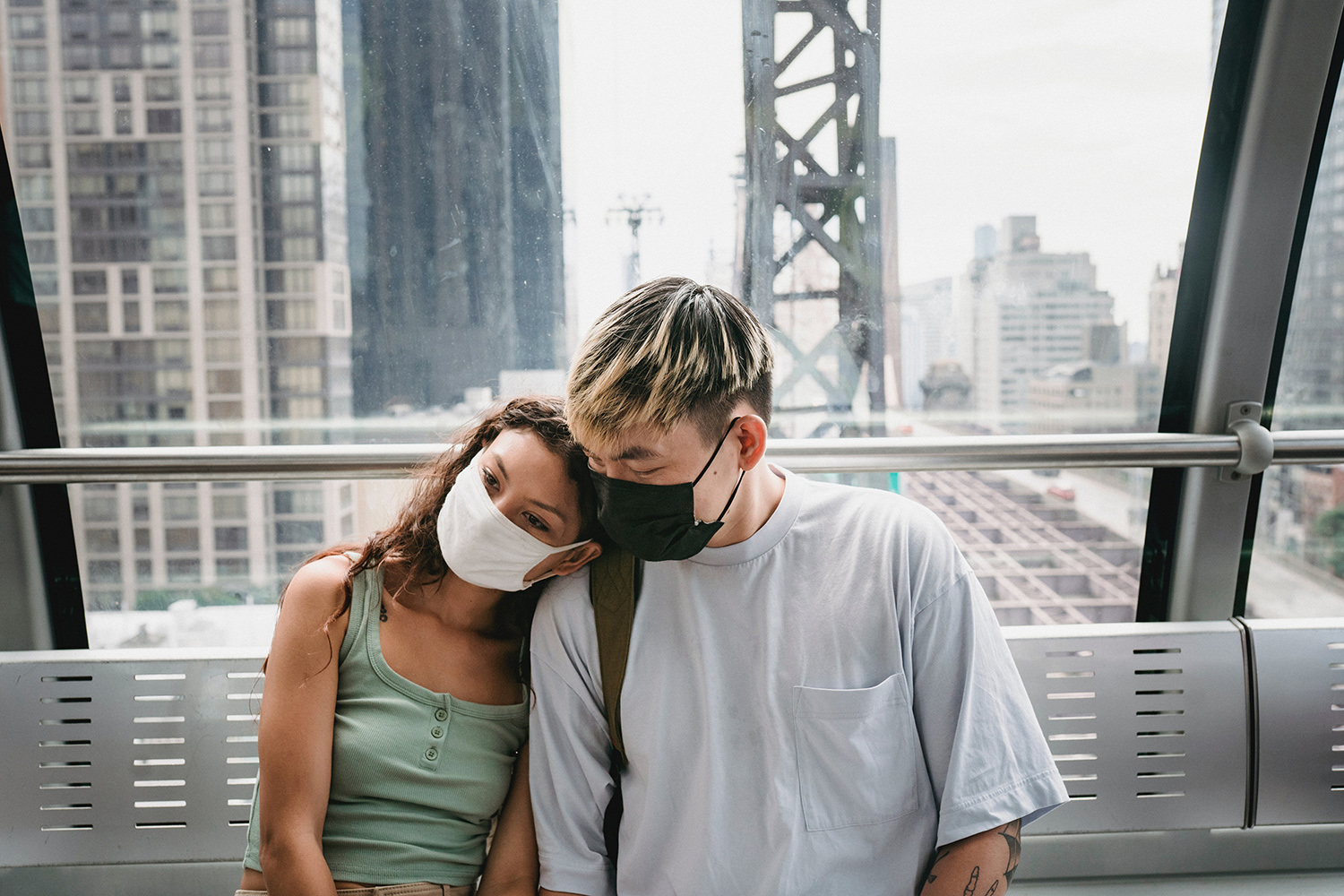
Throughout history, societies have relied on people’s behaviors to help curb the spread of disease. A new paper published in the journal Affective Science offers the first evidence that the affective quality of people’s ordinary social interactions in both private and public spaces may shape infection-reducing behaviors during COVID-19.
We chatted with lead author Taylor N. West, a doctoral student in the department of psychology and neuroscience in the College of Arts & Sciences, about the research. West is in the Positive Emotion Psychophysiology Laboratory (PEP Lab), led by Barbara Fredrickson, Kenan Distinguished Professor.

Q: Can you briefly describe the study? What question was your research hoping to answer, and what key things did you find?
A: Our research question was guided by the theory that predicts that moments of shared positive emotion during everyday social interactions builds people’s concern for others’ well-being. We tested whether this might extend to adopting new behaviors known to protect others during the COVID-19 pandemic, like wearing a mask, washing your hands and maintaining social distance. We surveyed people both locally and nationwide across the first few months of the pandemic. The data supported our theory: The more people experienced positive emotions together with others, the more concern they had for others, which translated into taking on these health behaviors.
Q: Can you briefly explain the idea of positivity resonance in the paper?
A: “Positivity resonance” is a term coined in the PEP Lab that refers to moments of shared positive emotions within high-quality social connections. These can occur with people you know well — as well as with complete strangers. For a moment of shared positive emotion to be considered positivity resonance, the individuals would also show synchrony in their caring non-verbal behaviors, like smiles and nods, and in their biology, like their heart rates. Because synchrony is a key feature, the experience of positivity resonance is strongest during real time, face-to-face interactions.
Q: Did positivity resonance play a role in people’s willingness to practice community safety standards for the benefit of others during the COVID-19 pandemic?
A: Yes. Experiencing more positivity resonance on a given day led to greater concern for others’ well-being. This other-focused concern also extended to increased reports of mask-wearing, handwashing, and to a lesser degree, social distancing, regardless of people’s political orientation.
Q: Did the study look at whether behaviors changed from early in the pandemic to later in the pandemic as public messaging changed?
A: We collected our data during the early months of the pandemic, between March and July 2020. In those early months, advice was mixed on the necessity and effectiveness of mask-wearing. It took a while for people to get on board with mask-wearing once the Centers for Disease Control and Prevention began recommending masks on April 3, 2020. Our study was able to track increases in adherence to mask-wearing, whereas later on in the pandemic, it was more of an established norm. Social distancing was trickier since policy and local regulations changed often between March and July, from some places experiencing complete lock-downs, to others allowing indoor dining again by summer.
Q: What are the applications of the findings? What do you hope people and policymakers learn from this?
A: Because the United States lacked uniform policy on behaviors to limit the spread of COVID-19, people often had to decide for themselves which recommendations to follow. So, people’s internal motivations to protect others’ health mattered. We think it’s important to recognize that these internal motivations rise and fall with the emotional quality of social connections. If that emotional quality wanes, so too will our motivations to protect public health. People can know that as positivity resonates between them and others, they are planting seeds for better public health in their community. Policymakers might use these new insights to design more motivating public health messaging.
West earned her master’s and bachelor’s degrees in psychology at Northern Arizona University. Her research focuses on how shared positive emotions during social interactions contribute to health and well-being across a range of conditions, with a particular interest in connections people can make with strangers and acquaintances in their communities.
Interview by Kim Spurr
